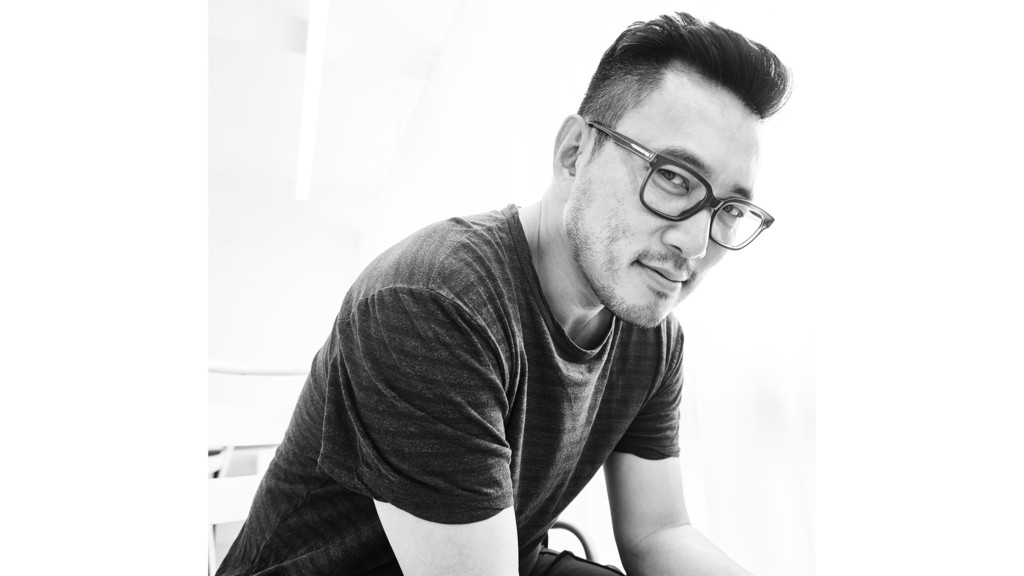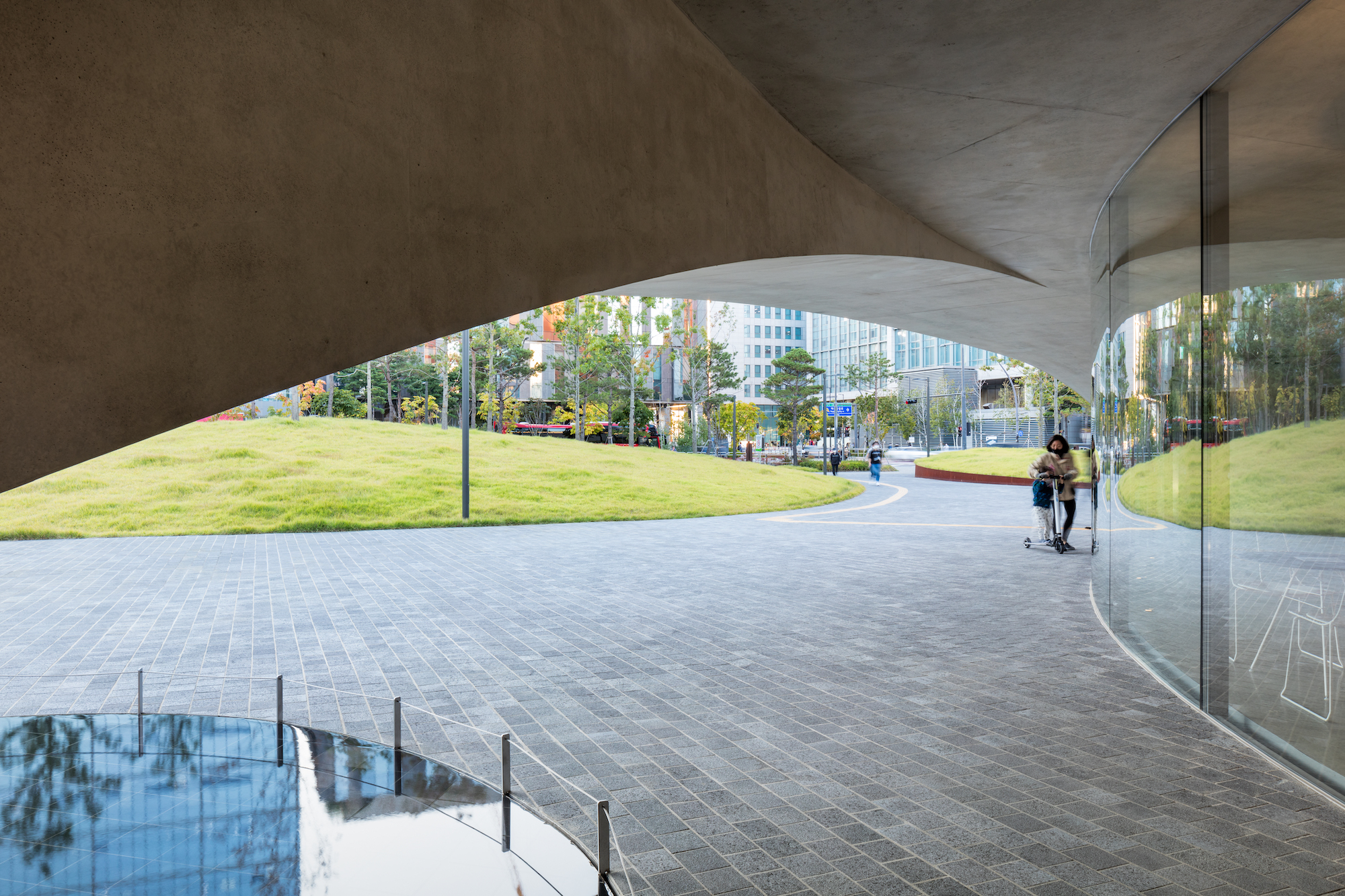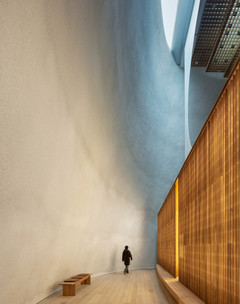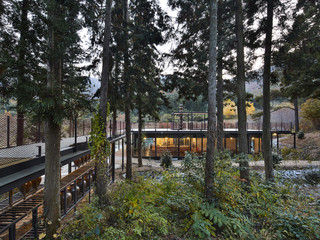
Behind the Podium: A few questions with guest speaker Minsuk Cho
Feb 21, 2023
Minsuk Cho founded the Seoul-based firm Mass Studies in 2003 and is committed to the discourse of architecture through socio-cultural and urban research and, primarily, built works recognized globally. Current in-progress projects, all selected through competitions, include the new Seoul Cinematheque, the renovation of the Danginri Power Plant into a cultural complex, and the Yeonhui Public Housing Complex.
Cho presents a lecture as part of AUD’s Public Event Series on Wednesday, February 22 at 6:00 pm. He is also a panelist in UCLA's Center for Korean Studies conference, "Energy in Asia," taking place Thursday, February 23 and Friday, February 24. Ahead of these events, Cho spoke with AUD about his journey thus far and some thoughts on the future.
First, welcome to UCLA and to Los Angeles. What are some of the first thoughts that come to mind when you think about LA and its architecture?
Thank you. My first thought is 'topography' – a condition that LA and Seoul share, although they have contrasting densities. The second thought that comes to mind is ‘challenge’ – as I have never owned a car in my life. For the past 30 years, I have always had my work and home within walking distance, first in New York City and Rotterdam, then in Seoul. However, for me, riding in a nice car in the usual pleasant weather in LA is almost exotic and exciting as taking a gondola in Venice, Italy.
Tracing your career, you studied in Seoul before studying and working in New York and Rotterdam and then returning to Seoul in 2003, when you founded Mass Studies. What inspired you to establish your practice? Had your perspective on Seoul been changed by your experiences in North America and Europe?
Korea has a long, complex history. However, since the modernization process, we have gone through the most dynamic, if not tumultuous, process, which has, in consequence, ignited radical socio-cultural changes which are still current, even throughout the last 20 years since my return to Korea. We are still trying to understand and engage with these diverse, and often unprecedented opportunities as much as we can in a meaningful way. Yes, my perspective on Seoul is absolutely influenced by the various influences I've had from my time in New York, North America, and Europe. Yet the world, including myself, has to catch up with this changing, moving target: (that is) Seoul, Korea. I am keeping an eye on this here in Korea, and being an architect is, in a way, an ideal position for this moving target because it takes a long period of time with a much-needed degree of intense focus and commitment.
Seoul is a super-dense city, while Los Angeles and a lot of urban/semi-urban regions in California are quite lateral; I love how you described the Californian condition in 2020: a “utopian, Silicon Valley-inspired vision of living in low, spread-out space, with lots of green and nature.” Do you find design motivations or precedents in California that could serve urban design in Seoul, and vice versa?
The quote is probably from when I was describing how Seoul has been the focus of massive migration on this little peninsula, after the war, during the latter half of last century. Yet in the last couple of decades, there has been a gradual exodus, where the city population has decreased from 11 million to 10 million. This primarily has to do with the very high price of living. The metropolitan region's hyper-dense urban sprawl with satellite cities has become larger. However, remote places, like the volcanic island of Jeju, or other regions in Korea, have also experienced its effects. In some aspects, it was comparable to the beginnings of Silicon Valley. It has inspired many Korean urbanites to make this move, although I think it's still in a trial, experimental phase.
You are in Los Angeles this week to take part in a conference, “Energy in Asia,” with our UCLA colleagues at the Center for Korean Studies. What are some of the topics and questions you plan to discuss there?
Professor Albert Park (Claremont McKenna College, Department of History) and I have developed a friendship over the years, and he invited me to participate in the "Energy in Asia" conference.
I'm not an expert on 'energy,' but I will discuss the topic by showing a few recent projects by Mass Studies. As I was preparing, I realized the issue of 'energy' relates to our very mission about why we call ourselves 'Mass' Studies: ‘Mass’ deals mainly with dual, yet interrelated contexts, in science and sociology, or nature and culture. One of the important roles of an architect is to organize the material world in a sensible way–the materials that evidently come from nature. Then there is another 'mass,' a word used in the socio-cultural context, and how architecture can be an effective apparatus for sensibly organizing and nurturing some kind of important 'flows' created by humans beyond tangible materials. I will be talking about 'energy' along these two lines. Every project addresses and implies these kinds of energies. My work doesn't reflect all of Asia, but the projects will present a very case-specific solution which happens to be all based in Korea. As we are in a thoroughly globalized time, with shared benefits and symptoms, I'm confident there is a common interest, which I hope we uncover together at the conference.
Your work has often been framed as play, or negotiation, among tensions: past and future, local and global, utopian and real, human and natural. This, in turn, allows for a range of scales and uses behind your projects. Is there any type of aspiration or tendency that is shared across your range of work?
What is described is from the early days of my practice and sounds a bit ambitious, but in fact, it is a reality that seems to have been perpetually exasperated, these in-betweens of many things and multiple transitional forces. We try not to overestimate an architect's capacity or what we can do with architecture–a mistake we've made in the last century, which came from what can be called a utopian position. At the same time, we try not to be dismissive and underestimate what we can accomplish through architecture. So it's not dystopian helplessness, either. Again, we are somewhere in between and are constantly evaluating positions that drive our projects' aspirations and tendencies.

Our work is a form of research that comes from genuine curiosity and care, and we gravitate toward what we think are the important things we want to nurture, whether it's nature or culture, or a combination of both in most cases, and architecture is a great apparatus for them, not the goal itself. Not sure how the sum of our quite varied works that came from those decisions appears to you and others, but I have to note that the foundations of these works are also from serious and consistent decisions about what not to be engaged with. We have said 'no' to more projects because the majority of work in our profession is unnecessary or redundant, especially among many things, in terms of where our planet is currently.


- Won Buddhism Wonnam Temple (2022), photo by Kyungsub Shin
- Vinegar Park – Choru (2023), photo by Yong-Kwan Kim